DRAFT: Preliminary internal document in review/ Do not cite
This is an internal website intended to capture current approaches and knowledge base from the Natural Sounds & Night Skies Division in order to provide guidance to the field in an easy, user friendly format. It is still under development and this version was made available solely for this internal review. Following review, and prior to formal internal agency vetting, pages will be inactivated in order to incorporate input.
4B Planning Documents
Acoustic resources should be addressed throughout the NPS planning framework. Ideally, acoustic resources planning should start at the highest level. Incorporating the acoustic environment in foundation documents and comprehensive plans provides a solid basis for protecting acoustic resources throughout all levels of park planning including resource management plans, strategic plans, and studies and inventories. For NPS staff, navigate to the relevant community of practice on Teams, Sharepoint, or equivalent platforms for detailed information on best practices.
The following sections provide guidance for incorporating the acoustic environment into common park planning products.
4B.1 Foundation Documents
The acoustic environment is a natural and cultural resource protected by the NPS Organic Act, however, acoustic resources are important components in the management of other park resources. When developing the foundation document, consider the acoustic environment as a resource with inherent value or as a resource integral to other fundamental resources and values. Examples include wildlife, habitat, wilderness character, cultural landscape, contemplative atmosphere, high quality visitor experiences, and healthy ecological function. Acoustic resources and soundscapes may be integral to more than one of these other resources and values. Acoustic resources should be considered when developing foundation documents.
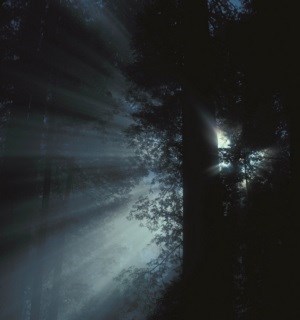
- Over 90% of Dinosaur National Monument retains substantial wilderness character, which provides opportunities for visitors to experience solitude, natural sounds, dark night skies, wilderness whitewater recreation, wildlife viewing, and inspirational scenic vistas.
- Redwood National and State Parks provide opportunities to experience and draw inspiration from the natural sounds and subtle variations of light and fog found within the natural cathedral of old-growth redwood forests. The exceptional air quality, wilderness character, and dark night skies found within this landscape enhance and contribute to the quality of this experience.
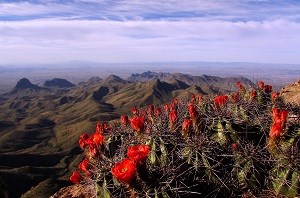
- With over 800,000 acres of protected land, Big Bend National Park provides exceptional opportunities to experience primitive desert wilderness, undisturbed natural soundscapes, solitude, world-class dark night skies, and unparalleled scenic vistas, extending into Mexico. Recreational and educational experiences include rare bird and wildlife viewing, river floating, international border crossing, hiking, sightseeing, and camping.
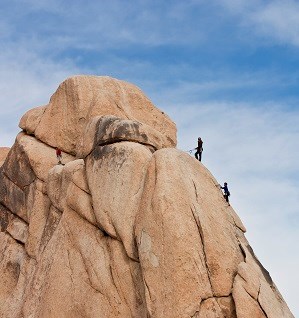
Other significance statements contain language that reflects the quality of acoustic conditions in the park. For example:
- "The contiguous rural landscape preserved and protected by Manassas National Battlefield Park allows visitors to better connect with the historic events of the battles, helps foster reverence for the suffering and sacrifices of its participants, and provides opportunities for learning in an immersive environment."
- "The 24 miles of beach within Canaveral National Seashore preserves the longest extent of undeveloped, pristine beach along the Florida Atlantic Coast and provides rare opportunities for uncrowded seashore recreation."
Parks should consider acoustic resources and soundscapes as a fundamental resource when the park's significance statements include topics such as contemplative landscapes, wilderness character, and diverse wildlife habitat. In its foundation document, Joshua Tree National Park identified "natural quiet" and the "soundscape" as a fundamental resource and value. This supports ideas in several significance statements such as biologically rich ecosystem, connectivity of open lands and large protected areas, remote desert landscape, rich array of resources, unique aesthetic, educational, and recreational opportunities, and scenic landscapes. In outlining primary interpretive themes, the Joshua Tree National Park Foundation Document emphasizes that, "the park provides opportunities for quiet introspection, reflection, cleansing, nurturing, and emotional healing." The Foundation Document also explains that "The wilderness experience is characterized by both physical and intangible qualities such as solitude, freedom, isolation, refuge, and connection with nature. These qualities provide contrast to an increasingly urbanized regional landscape and emphasize the park's value." These qualities are closely related to the condition of the acoustic environment.
Other examples of fundamental resources and values include:
- Haleakala NP - Natural Sounds, Viewsheds, and Dark Night Skies –Natural sounds, panoramic views, and dark night skies greatly contribute to Haleakalā's unique sense of place. Ambient sound levels in the Haleakalā Crater are so low that they approach the threshold of human hearing, and the crater and summit offer world-renowned stargazing opportunities. Visitors flock to the summit to witness spectacular sunrises over the park's natural landscape—this and other views in the park are supported by its excellent air quality. In addition to being highly desired values for visitors, dark night skies and natural soundscapes are vital components of a healthy, intact, biological community. Each plays an important role in wildlife communication and behavior. The preservation of natural sounds, viewsheds, and dark night skies is also critical to effective wilderness management.
- Bryce Canyon NP - The predominance and maintenance of natural quiet is integral to fully appreciating and experiencing the panoramic vistas of Bryce Canyon National Park. Natural soundscapes are an essential resource critical to visitor experience and the functioning of biological systems.
- Devils Tower NM - Remote Setting (Night Skies, Viewshed, and Soundscape): Devils Tower is far removed from population centers and modern development. This natural landmark is characterized by uninterrupted views both of and from the tower, pristine night skies, and natural soundscapes. Together, the viewshed, soundscapes, and night skies are essential to a high-quality visitor experience and to the cultural values associated with Devils Tower.
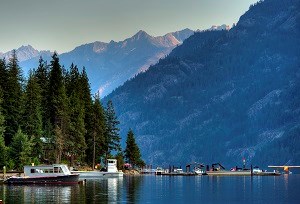
NSNSD uses a geospatial model to describe conditions and potential impacts to the acoustic environment. This robust and dynamic tool allows parks to understand the basic acoustic conditions in the park and can be used to document the existing acoustic data and future planning needs. Spatially referenced datasets can be downloaded from the NPSDatastore.
For example, this resource summary uses the geospatial model to document the acoustic resource for inclusion in the foundation document for Glacier National Park.
In outlining primary interpretive themes, the Joshua Tree National Park Foundation Statement emphasizes that, "the park provides opportunities for quiet introspection, reflection, cleansing, nurturing, and emotional healing." The Foundation statement also explains that "The wilderness experience is characterized by both physical and intangible qualities such as solitude, freedom, isolation, refuge, and connection with nature. These qualities provide contrast to an increasingly urbanized regional landscape and emphasize the park's value." These qualities are closely related to the condition of the acoustic environment.
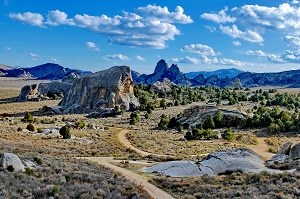
4B.2 General Management Plans and Other Comprehensive Plans
Comprehensive plans, such as the General Management Plan (GMP) set long-term goals for parks, trails, wild and scenic rivers, and Wilderness, and provide broad direction for resource preservation and visitor use. It provides a framework for decision making at the broadest level, and a variety of implementation plans tier off. Similar to foundation documents, it may be appropriate for you to address acoustic resources as a management topic or to incorporate it in the discussion of other management topics. Within comprehensive plans, the desired conditions for acoustic resources can be established along with management activities designed to protect the resources, and impact mitigation techniques.
City of Rocks General Management Plan and Environmental Impacts Statement is a document that demonstrates how soundscapes and acoustic resources can be incorporated into a GMP including the identification of key planning issues, concerns, desired conditions, and possible management actions.
In the City of Rocks plan, acoustic resources are included as one of the ten main planning issues and concerns. The plan states, "Natural sounds are a fundamental resource of the Reserve, also referred to as the 'Silent City of Rocks.' Military and commercial overflights, especially at night, have an impact on both visitor experience and wildlife. Reserve operations and visitor activities can also contribute to the deterioration of the natural soundscape. Baseline acoustical monitoring has recently been conducted to measure and record the sounds of the Reserve. The GMP will present recommendations to maintain natural sounds and natural quiet in the Reserve." (p. 19)
To preserve and protect the acoustic environment at the park, the GMP includes several desired condition statements for soundscapes. One example is, "Noise from management or recreational uses is minimized to provide a high-quality visitor experience and protect biological resources and processes that rely on sound." (p. 60) Other desired conditions are designed to protect the natural sound conditions, mitigate specific noise issues, encourage cooperation from visitors, and educate the public about noise management and natural soundscapes.
In order to manage the resource, the plan delineates several management strategies (p. 60) including:
- Monitor and prevent or minimize unnatural sounds that adversely affect reserve resources or values or visitors' enjoyment of them.
- Require Reserve staff, contractors, guides and outfitters, and tour bus companies to comply with measures designed to reduce noise levels.
- Minimize noise generated by NPS management activities by moderating administrative functions such as the use of motorized equipment.
- Encourage visitors to avoid unnecessary noise, such as minimizing the use of generators and maintaining quiet hours in the campgrounds.
- Provide interpretive programs and materials to help visitors understand the role of natural sounds and the value of the Reserve's soundscape.
Comprehensive plans that trigger the National Environmental Policy Act (NEPA) and require an Environmental Impact Statement (EIS) or Environmental Assessment (EA) should consider soundscapes, the acoustic environment, or noise management as an impact topic. City of Rocks National Reserve includes soundscapes as an impact topic in the EIS portion of the GMP/EIS document. This section describes the soundscape in the Affected Environment section and discusses potential impact to the soundscape and acoustic environment in the Environmental Consequences section. Often NEPA documents describe potential mitigation opportunities. These are discussed further in Chapter 6: Mitigation.
4B.3 Resource Stewardship Strategies
A resource stewardship strategy (RSS) is a strategic plan intended to help park managers achieve and maintain desired resource conditions over time (see NPS Management Policies 2006 [§2.3.2]). As part of a park’s planning portfolio, a resource stewardship strategy serves as a bridge between the park’s foundation document, other plans, and everyday management of its natural and cultural resources. A resource stewardship strategy is reviewed by NPS subject-matter experts and decision makers; however, it is not a publicly reviewed decision document. NPS staff should navigate to the relevant community of practice on Teams, Sharepoint, or equivalent platforms for detailed information on best practices.For parks that have identified the acoustic environment as an inherent value or as a resource integral to other fundamental resources and values within other planning processes (e.g., foundational documents, GMPs), parks should consider addressing the acoustic environment in their RSS. Broadly, an RSS identifies key issues, stressors, or threats to the resource conditions within a park; then, identifies long-term goals, short-term goals, and stewardship activities to help address the issues, stressors, and threats.Consider the following for the acoustic environment when developing an RSS document:Potential Issues
- Noise from park facilities and operations
- Noise from nearby development, transportation, watercraft and aircraft
- Noise from visitors such as visitor vehicles, music, and electronics
- Reduce noise from park operations (time activities to preserve quiet times, purchase quieter equipment)
- Conduct outreach to visitors about reducing noise from sources such as electronics and idling vehicles
- Communicate with visitors about the benefits of noise reduction to park experience and wildlife health
- Collaborate with partners and neighbors to manage noise sources that could affect park resources
- Long-term goal - Improve the acoustic environment by reducing noise pollution to preserve park-protected resources.
- Short-term goal - Protect and improve conditions by assessing how park operations (e.g., grounds care, construction, transportation) affect the cultural, wildlife, and wilderness values associated with the natural acoustic environment.
- Stewardship activities –
- Identify noise sources and reduce or mitigate noise from park operations.
- Identify the sources and reduce or mitigate noise from visitor-based activities.
- Identify areas where park-created noise pollution intersects with migrating and resident wildlife and improve the acoustic environment in those areas.

4B.4 Acoustic Resource Management Plans
When appropriate, parks may develop a separate acoustic resource management plan. Two such plans have been completed to date: Zion National Park Soundscape Management Plan (SMP) and Minute Man National Historical Park Acoustic Resource Management Plan (ARMP).
When undertaking acoustic resource management planning efforts, superintendents should consult with NSNSD for planning, science, and management support.
The process for developing an ARMP generally follows these steps:
- Scoping to identify the purpose and need for an acoustic resource management plan, and to obtain public input.
- A description of the park's acoustic environment, including sound sources, and levels, and natural and existing ambient conditions.
- Identification of existing or proposed sources of anthropogenic sounds that are consistent with park purposes, as defined by the establishing legislation, authorities, foundation document, GMP, and other relevant laws, regulations, or planning documents.
- Management objectives, indicators, and standards for protecting the acoustic environment and managing excessive noise.
- Potential management actions that should be considered to minimize impacts from noise.
- A monitoring and adaptive management process to identify trends in acoustic conditions and determine the extent to which objectives and standards are being met.
4B.5 Implementation plans
The goals and objectives of a comprehensive plan may lead to the development of more specific implementation plans such as wilderness, transportation, visitor management, recreation, concessions, interpretive, or facilities plans. Within each of these plans, noise reduction and acoustic resource management should be considered and incorporated when applicable.
WildernessMany parks contain areas that are designated, proposed, or managed as wilderness. Preserving the acoustic environment and natural sounds of such areas is critical to effective wilderness stewardship and can have important effects on wilderness character. Natural acoustic conditions and the absence of human-caused sound are critical for maintaining the wilderness qualities of untrammeled, natural, undeveloped, and solitude. Noise, often from distant roads, park operations and maintenance activities, or aircraft overflights, is one of the most common and pervasive human influences on the primeval character of wilderness. A loud or persistent noise source can be a prominent "imprint of man's work" that can make a backcountry user or camper instantly aware that they are not alone. Wilderness should be essentially unhindered and free from modern human control or manipulation and retain its primeval character and influence. Human caused noise, especially low frequency sound from industrial developments, vehicles, and machinery can travel for miles in certain terrain. Addressing the acoustic environment in parks is critical to protecting the quality and character of wilderness.
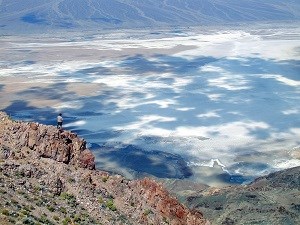
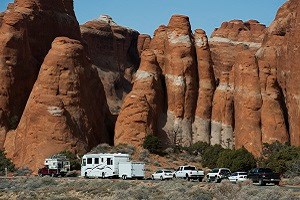
A primary source of transportation noise comes from motorized vehicles on roadways in or near parks. Transportation planning offers parks the opportunity to describe the issues around vehicle noise, define the noise sources and acoustic characteristics, develop goals for reducing transportation noise, and define indicators and standards for reaching those goals.
At Bryce Canyon National Park, the long range transportation plan includes acoustic standards for both frontcountry and backcountry areas. For the frontcountry, the park relies on the potential for noise to interrupt human speech as an indicator of impact. The goal is to have human-caused sound levels be less than 45 dB (LAeq, 1s) for at least 99% of the day. This measure is based on a goal of improving existing conditions. In the backcountry, the expectation that noise will rarely be audible is reflected in the transportation plan's goals and objectives. Therefore, the goal for backcountry areas at Bryce Canyon NP is to ensure that the average hourly time audible for vehicles does not exceed 1%.
In order to accomplish these standards, the park includes measures in the plan that will manage noise. These activities include controlling vehicle speeds through speed limits and enforcement, outreach to motorists about noise from revving and idling, use of quiet pavement in future road projects, and implementation of the NSNSD Motorcycle Outreach Program.

Some parks have noise management issues that stem from motorized recreation. For example, recent policy and plans were developed to address off-highway vehicles (OHV), personal watercraft (PWC), oversnow vehicles (OSV), and unmanned aerial systems (UAS). These activities affect the acoustic environment, wildlife behavior, habitat use, and visitor experience. Thus, several parks have developed plans to manage these noise sources.
Off-highway Vehicles (OHV) offer an alternative way for visitors to experience a park and are enjoyable for some park visitors. But, they also affect park resources and can create visitor conflicts. One of the influences to park resources is from noise generated from the OHVs. OHVs are unique as a noise source because they can bring motorized noise to areas where it otherwise would not be because they can travel away from pavement and designated roadways. For example, in 2012, Cape Hatteras National Seashore issued an Off-road Vehicle Management Plan/Environmental Impact Statement after a multi-year planning process. It evaluated the use of OHVs against resource protection and visitor access goals. It also assessed the effects of OHV use and identified methods of minimizing user conflict and promoting safety throughout the park. Because OHVs at Cape Hatteras NS have the potential to bring noise to areas where it wouldn't otherwise occur, the acoustic environment was an important topic in the environmental analysis.
Personal Watercraft (PWC) use is a challenging issue at some park units that manage motorized watercraft. Following a 2000 NPS rule limiting use of PWCs, several parks (e.g. Pictured Rocks National Lakeshore, Gulf Islands National Seashore) coordinated planning processes to determine if PWCs were appropriate. The 2000 rule prohibits PWC use in national park areas unless the park determines that this type of water-based recreational activity is appropriate for a specific park based on the legislation establishing that area, the park's resources and values, other visitor uses of the area, and overall management objectives. In each plan, PWC use needed to be formally authorized through a public process, including a thorough environmental analysis. These processes included planning components such as the establishment of goals, objectives, indicators and standards –all of which are weighed against the park's purpose and significance. The issues were complex and the resource impacts varied. However, noise management was an important topic in each of these plans. The acoustic environment was well described, scientifically measured, and critically analyzed in each Environmental Assessments (EA).
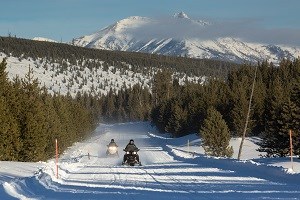
Oversnow Vehicle (OSV) (Snowmobiles and snowcoaches) have new management guidelines in Yellowstone National Park. In 2013, the park established a management framework for OSV use that allows the public to experience the unique winter resources and values but also protects the park. The Yellowstone Winter Use Plan was established with significant public participation, resource planning, and scientific assessment. It authorizes oversnow vehicle (OSV) use in Yellowstone NP and contains provisions that allow greater flexibility for commercial tour operators, rewards oversnow vehicle innovations and technologies that improve the Yellowstone experience, and allows for an increase in visitation. It also requires snowmobiles and snowcoaches operating in the park to meet air quality and sound emission requirements and be accompanied by a guide.
Other implementation plans
The previous sections described plans that commonly incorporate acoustic environment. Other plans developed by the NPS should also consider the acoustic environment. When approaching any of these processes, start with the following questions:
Visitor use plans
Where, when, or how do visitors use different areas of the park?
- Do visitors in various areas of the park have different expectations about the soundscape?
- Is a quiet zone appropriate?
- Is there an opportunity to share messaging about idling, cell phones, motorcycles, etc.?
- How can natural and cultural sounds enhance the visitor experience?
Are there opportunities to include noise reduction in contract renewals (e.g. maintenance and replacement of machinery, use of quiet technology, public address systems, or hours of operation)?
- What incentives might inspire concessions to reduce operational noise?
- Can noise mitigation be used as a factor for selecting concessionaires?
- How can parks use acoustic recordings or data (natural and cultural) to convey the interpretive themes of the park?
- How do noise sources affect the ability of visitors to participate in interpretive activities?
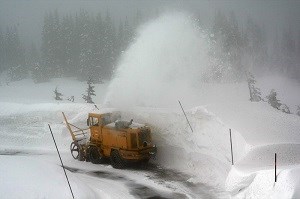
- Are there opportunities to include noise reduction in facility construction, design, and maintenance contracts?
- What incentives might encourage contract and maintenance staff to reduce noise (e.g. Buy Quiet Program)?
- What are the primary noise sources from facilities and maintenance activities (e.g. lawnmowers, chainsaws, HVAC systems) and how can these sources be mitigated?
RM-47 Home
Next Chapter 5: Impact Assessment
Appendix A: Glossary
Appendix B: Authorities
Last updated: June 18, 2024
